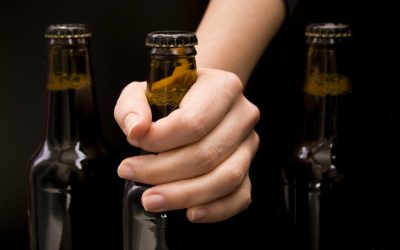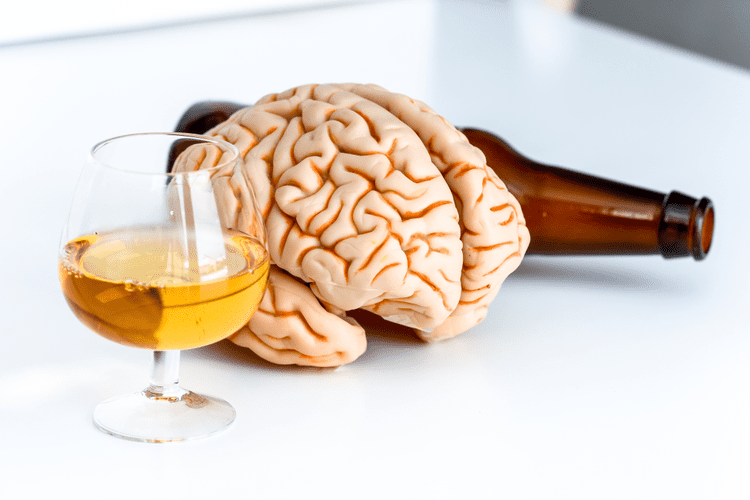The damage may be physical (e.g. hepatitis) or mental (e.g. depressive episodes secondary to heavy alcohol intake). Harmful use commonly, but not invariably, has adverse social consequences; social consequences in themselves, however, are not sufficient to justify a diagnosis of harmful use. More than 40 percent of respondents who began drinking before age 15 were classified with alcohol dependence at some time in their lives, the researchers found. That compares to 24.5 percent for respondents who began drinking at age 17 and approximately 10 percent for respondents who began drinking at the ages of 21 and 22.

If you choose to drink, the?UK Chief Medical Officers (CMOs) advise that to keep health risks from alcohol to a low level it is safest not to drink more than 14 units a week on a regular basis. If you regularly drink as much as 14 units per week, it’s best to have three or more drink free days each week. A doctor may diagnose alcohol dependence if you show two or more of the above symptoms based on the ongoing pattern of how you use alcohol. Usually this is based on behaviour over the last 12 months or more, but alcohol dependence could be diagnosed based on continuous daily (or almost daily) use of alcohol over a period of at least three months. Doctors assess whether someone is dependent on alcohol by looking for signs that show their patient can’t regulate their drinking, and that they have a strong internal drive to use alcohol.
Associations Between Specific Socioeconomic Variables and Alcohol Use
Psychologists can also diagnose and treat these “co-occurring” psychological conditions. Further, a psychologist may play an important role in coordinating the services a drinker in treatment receives from various health professionals. Many people ask the question, “Is there a difference in alcohol abuse and addiction? ” The answer to this question is yes, but they are very similar, and alcohol abuse can quickly turn into alcohol dependence. Abusers are typically heavy drinkers who continue drinking regardless of the results. We think that prudent parents and a prudent society should assume,
based on the current evidence, that underage drinking increases the
risk of future drinking problems and contributes independently to
the many deficits experienced by early drinkers over the course of
their lives.
Experimenting with alcohol – and drinking to excess – has long been seen as a rite of passage into adulthood, at least in Western cultures. From an early age, often before the legal age, alcohol https://clubbing-croatia.com/festivals/festivals/ultra-europe-2016-resistance-stage-17052016.html is embraced as a social lubricant, a way to have fun, make friends and escape day-to-day realities. “I was in a really, really nasty relationship and my mental health was bad,” she said.
6. PHARMACOLOGY OF ALCOHOL
For example, the prevalence of alcohol use among homeless individuals has been estimated to be as high as 80 percent (Velasquez et al. 2000), which is substantially higher than in the general population. A meta-analysis of international studies determined a mean alcohol-dependence prevalence of 38 percent among homeless individuals (Fazel et al. 2008), which is 10 times the prevalence of alcohol dependence in the http://www.fanclub-fakel.ru/news/text/1546 general U.S. population (Grant et al. 2004). Chronically homeless people also often have severe and persistent psychiatric, medical, and substance-use disorders (Collins et al. 2012; Fazel et al. 2008; Hwang 2001; Mackelprang et al. 2014; Martens 2001). As has been noted previously, relationships with parents, carers and the children in their care are often damaged by alcohol misuse (Copello et al., 2005).
- With the right support and motivation, many people can stop drinking or cut down to a lower-risk level of alcohol consumption.
- At 3, Sami, who grew up in a one-stoplight town, was in a car accident that left her mother permanently institutionalized with a brain injury.
- There is evidence that drugs which block the opioid neurotransmitters, such as naltrexone, can reduce the reinforcing or pleasurable properties of alcohol and so reduce relapse in alcohol-dependent patients (Anton, 2008).
- If compared within the framework of the 1971 Convention on Psychotropic Substances, alcohol would qualify as a dependence-producing substance warranting international control (United Nations, 1977; Ofori-Adjei et al., 2007).
Although alcohol-related youth
motor vehicle fatalities have decreased substantially over the
past decade or so, youth are still overrepresented in
alcohol-related fatal crashes compared with the older
population. In 2000, 69 percent of youths who died in
alcohol-related traffic fatalities involved young drinking
drivers. It remains a very serious issue with extreme
consequences, not only for the young driver but also for
innocent victims.
I am young. Is drinking bad for my health?
Although severe alcohol problems get the most public attention, even mild to moderate problems cause substantial damage to individuals, their families and the community. Joryan Polk, 22, a member of the San Carlos Apache Tribe, had grown so despondent during his drug treatment program that he called his mother to say that no one was listening or helping, his mother said. He was found dead and face down in his bedroom last January after overdosing on meth and fentanyl. Residents at the home told a police officer that nobody had checked on Mr. Polk for about two days, according to a police report.

Only slightly behind the Eastern European countries are Western European countries – including Germany, France, Portugal, Ireland, and Belgium – at around 12 to 14 liters. We’ll be able to tell you if your insurance provider is in network with an American Addiction Centers treatment facility. No part of this book may be reprinted or reproduced or utilised in any form or by any electronic, mechanical, or other means, now known or hereafter invented, including photocopying and recording, or in any information storage or retrieval system, without permission in writing from the publishers. The American Psychological Association gratefully acknowledge the assistance of Peter E. Nathan, PhD, John Wallace, PhD, Joan Zweben, PhD, and A.
What is a standard drink measure?
However, most people with AUD—no matter their age or the severity of their alcohol problems—can benefit from treatment with behavioral health therapies, medications, or both. 1The terms “heavy episodic drinking” and “binge drinking” have sometimes been used http://soundtrackmusic4u.ru/download-online/skachat-torrent-country-and-western-original-masters-cd-10-country-various-artists/ synonymously. The latter, however, has fallen out of favor with some alcohol researchers and treatment professionals because it can be confused with a longer-term and more extreme alcohol-use period than is typically referred to as a heavy drinking episode.

